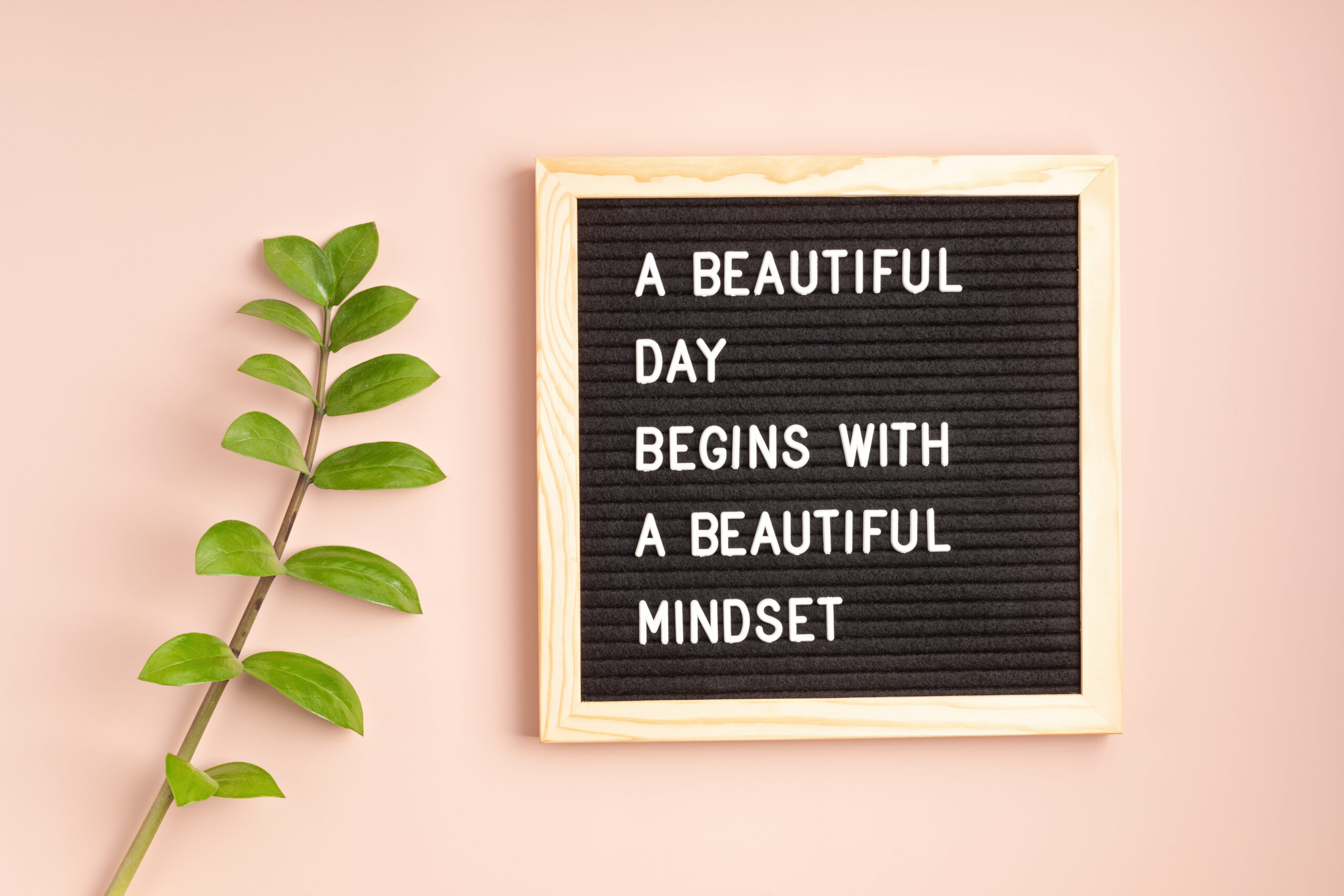
Establishing a Healthy Mindset
Establishing a healthy mindset and creating a new, healthy relationship with food may seem overwhelming in the age of fad diets and strenuous exercise regimens. Still, your goal is to make it easier by emphasizing your thinking above an ideal body image or a rigid diet routine.
The following steps will lead you through simple, individualized stages to a new healthy eating perspective so that you can feel good about what you eat mentally and physically.
You can approach your objective with confidence and tenacity by laying out this foundation. A healthy mentality is a crucial component of the link between diet, body, and spirit.
The following steps go over the stages of planning and preparation that will assist you in creating your new healthy attitude, explain the relationship between eating well and feeling good, and offer you numerous techniques for creating and maintaining your new healthy eating mindset.
This way, you can change your eating behaviors and mindset before starting difficult diets or fitness regimens. Therefore, you will be able to have a stable and rapid transition into whatever lifestyle modifications you would like to attain if you are given this knowledge in advance.
This information will also be helpful if you need to refer back to it because changing your mentality is a process rather than an overnight transformation.
Preparations to Take for Success

Where to begin is one of the most challenging obstacles to overcome when making any lifestyle change, especially one focused on changing one’s thinking. Because of this, the first and most important step in changing your eating habits is to provide an organized, firm foundation.
Then you can build all subsequent concepts around your connection with food. You could even say that these early experiences set the tone for all subsequent changes, so it’s crucial to recognize the impact that they can have on the rest of your healthy mindset journey.
Setting yourself up for success is one of the most crucial components of the planning and preparation phase. These stages will ensure you have a solid foundation to fall back on. Thereby making it easier to adjust to your new way of thinking.
By taking the time to position yourself for success, you can make every step of your mindfulness journey appear more doable and, in a sense, create a map of your goals and the routes you intend to take to get there.
Locate the Necessary Resources

Make sure you know all your resources before beginning your journey toward a new healthy eating mindset. You might have a wide range of healthy eating options, such as organic shops, vegan restaurants, or friends who are prepared to join you on this path. Take time to do some study and ask yourself the following questions if you are unsure of the type of resource you have nearby:
- Am I prepared to broaden my regional possibilities to accommodate the demands of my new attitude toward healthy eating?
- Can I be flexible in the resources I choose for my path toward a healthy eating mindset?
- How can I be receptive to new opportunities and local resources, like farmer’s markets or uncharted restaurants?
- Can I focus my grocery shopping on a healthy lifestyle, such as buying more fresh produce and organic foods, even at a typical supermarket or grocery store?
Maximize your area’s potential by using the resources you have and exploring for additional ones. Whether you reside in a rural area with few organic, vegetarian, or vegan restaurants, use farmer’s markets and investigate if a nearby town may satisfy your needs. If you live in a suburb and don’t know of any farmer’s markets, use organic supermarkets and organic and vegetarian restaurant menus. You may make Saturday mornings unique by visiting out-of-the-way marketplaces.
Plan Ahead for Success
Plan your week around the resources you uncover in your neighborhood. So you can design a planned schedule for your trip. Consider completing your weekly food shopping on the same day and try weekend farmer’s markets or particular restaurants.
In the beginning, adding these new resources to your present supermarket and restaurant options may be easy. Therefore, moving to these new resources may be beneficial as you develop your healthy eating philosophy.
Resources aren’t only food and ingredients. It would be best to focus on healthy eating mindsets, for example. Read lifestyle articles about healthy eating philosophies, new recipes, or methods to improve your diet to accompany this book. In your neighborhood, lifestyle clubs may meet to discuss mindfulness objectives or try new restaurants. Socializing your healthy eating might help you create new habits and mindfulness methods.
Beyond mindful eating, you can try meditation, yoga, or cooking lessons. Social resources provide inspiration, new information, and pleasure for lifestyle adjustments. Connecting with people over mindfulness practices and food will fuel your personal growth. You’re emotionally boosted and motivated to continue when you interact with like-minded people. These positive reinforcements can help you develop a healthy eating mindset, which will provide support and encouragement when you’re less inclined to keep to your new habits, such as your diet plan.
Flexibility distinguishes a standard diet plan from your healthy eating philosophy. A healthy eating attitude has no nutritional boundaries and asks you to consume what makes you feel healthy and content with food. You’ll uncover methods to customize your diet as you build a healthy eating mentality. Starting with a simple diet plan to provide structure in your healthy eating shift may be suitable.
Developing Your Healthy Mindset
Organic Foods: Organic retail chains and USDA-regulated labels make eating organic simpler. Switching to an organic diet is easy, as practically all food products are organic. Local fruit and animal products can augment store-bought organic goods. Locally, it’s easy to question farmers about their crop-raising processes to ensure pesticide-free fruit. Organic food’s clean and healthy properties may nourish your mind and body.
Vegan/Vegetarian: Some readers may choose a vegetarian/vegan diet, which excludes meat and animal products like dairy. Vegetarian and vegan diets provide an added layer of mindfulness to your healthy eating habit, helping you focus on food production outside your area of influence. Many vegetarians and vegans avoid meat due to animal suffering or environmental damage. This may help you build a healthy eating mentality, but any substantial lifestyle change can be challenging. If you were a frequent meat eater before adopting a healthy eating philosophy, consider eliminating one animal product at a time. This allows for a smooth diet change. You may not know how to cook tofu or eat the same salad daily.
Right from your garden: This diet may need more research or work than the previous two, but it may be more fulfilling and enlightening from a healthy eating attitude perspective. The garden-to-table strategy uses organic and produce-focused basics but emphasizes local or self-grown items. “Garden” might be yours, a friend’s, a communal garden, or a farmer’s. This choice increases your awareness of the food production and consumption cycle and your involvement in the local food cycle. Growing your food can help you build a new positive relationship with your diet. Also, you’ll feel gratified and accomplished when you harvest and consume excellent produce. You can combine the garden-to-table technique with either diet alternative. And you can generate mindfulness by growing herbs in a tiny indoor pot—you don’t need a vast backyard and expansive vegetable garden to produce your food.
In Summary:
I sincerely hope that this guide has effectively introduced you to the advantages of a healthy mindset and shown you how it may significantly enhance your relationship with food while improving your physical and mental well-being. You should be prepared to address all healthy attitude adjustments once you successfully change your eating mindset!
Whatever diet plan you decide to begin with, it’s essential to realize that the diet represents a small portion of your development. Of course, having a diet as a backup plan might make things a lot simpler for you. Ultimately, the real benefit of a diet is its capacity to force you to reconsider how you feel about eating.
Think of food as a special element of your life that adds value to you physically and spiritually. Don’t consider something you consume mindlessly. Or something you need to survive, or as a means to an end—like the ideal physique. You can decide exactly what that value is. Your new diet plan should assist you in determining the types of value you want to derive from your meals and how to optimize and enjoy that value.



Thanks!